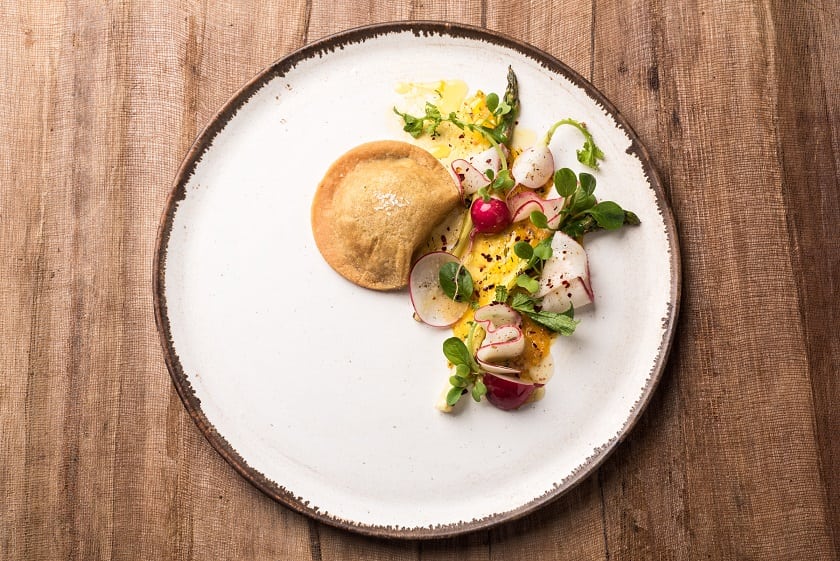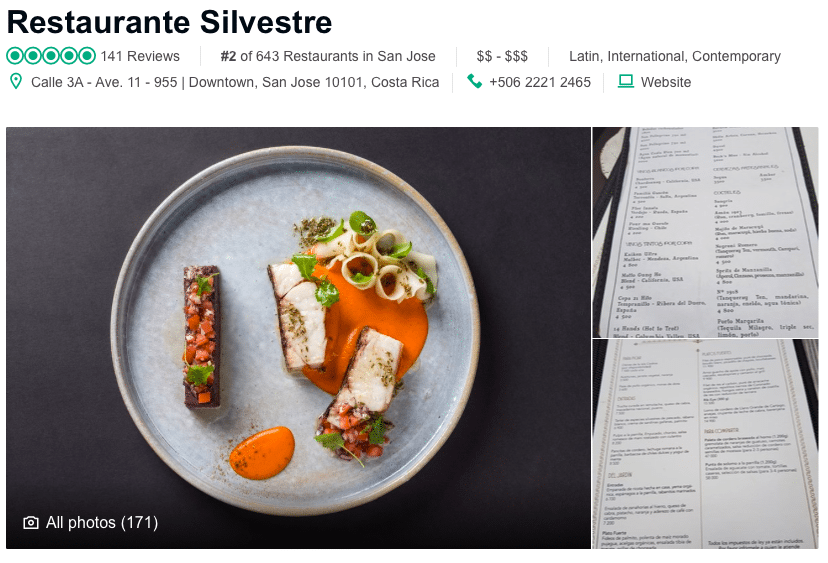3 Ways Costa Rican Fine Dining Is Getting More Local

Photo Caption: A dish crafted by chef Santiago Fernández Benedetto at Restaurante Silvestre in San Jose, Costa Rica.
Skift Take
The fine dining industry is slowly transforming diners' consciousness and relationships with local producers -- an evolution that has the potential to shift local economies in a powerful way if done well.
Costa Rican chefs are returning to San Jose with international training and a passion to create fine dining experiences that honor the abundance of local produce, however, challenges in sourcing and shifting perspectives still remain.
On a recent trip through San Jose, Skift Table spoke with the creative minds behind three of San Jose’s more innovative establishments to better understand what’s driving the culinary renaissance in Costa Rica’s often overlooked capital.
It takes one a perusatory glance around the country to realize it is rich in produce, however, for a country as abundant as Costa Rica, the dining industry has unfortunately fallen into the habit of importing resources while local goods are sent abroad. This not only dilutes the culinary experience but increases costs.
“It’s uncommon for Costa Ricans to use their local products and resources. The use of imported goods like meats, vegetables, and fruits from other countries has become popular country wide. We like to use local products, and if chefs show their interest in exploiting what Costa Rica has, we will be creating an experience that you will only be able to get here,” says chef Luciano Lofeudo, chef and co-owner of Isolina.

Chef Santiago Fernández Benedetto.
Isolina is a small, fine dining restaurant that opened in 2016 in the heart of Barrio Escalante within a house built in 1942 by the owners’ grandparents. Its philosophy revolves around the product thus their small menu changes daily reflecting the best and freshest ingredients available via their partnerships with farmers, fishermen and ranchers.
However consistency and availability of ingredients is a steady challenge, according to Santiago Fernández Benedetto, chef and owner of Restaurante Silvestre, who says that strategies like changing the menu constantly and playing with the seasons have been key for his team to continue working with local suppliers.
Restaurante Silvestre opened in August 2017 with a sophisticated tasting menu that combines storytelling and rich flavors. In a recent iteration of the tasting menu, each plate represented one of Costa Rica’s seven provinces with ingredients from that region.
Fernández has an interesting perspective on why Costa Rica, a country with such inherent abundance, has not emerged as a leader in the local culinary movement.
“We are blessed every year with everything we need without having to worry about strong seasons, hard weather, hurricanes, or wars that make for a culture to have a strong culinary background. Hardness is the key for culinary evolution…together with history, culture and many other factors,” he says.
This paradox also extends to the coffee world.
“Costa Rica has always been recognized as a country that produces some of the best coffee in the world; however, it wasn’t until recently that we started drinking high quality coffee here in our own country. Before, all the good stuff was exported and we only drank the cheap leftovers,” shares César Madriz and Brandon Mais, co-owners of Restaurante Franco which strives to contribute to the growth and evolution of San José as an urban and energetic city.
Speciality coffee shops started slowly appearing in San José in the past seven years, and started changing how people drink — and farm — coffee.
“Coffee farming and producing are changing in very exciting ways - a lot of coffee farmers are being exposed to the specialty coffee culture, some even tasting their own coffees for the first time, and that has helped shape the way they plan and manage their farms, from deciding which coffee varietals they plant to how it’s picked and processed,” says Madriz and Mais, highlighting the reciprocal relationship between a country’s culinary and farming evolutions.
Shifting Perspectives
Each of the establishments that we spoke to rely on a largely local customer base with 80 percent to 90 percent of diners coming from within San Jose. The tourist base is slowly growing, especially with the help of TripAdvisor, and is opening new doors for the dining industry.
"Tourism definitely brings more opportunities to the market, as does a growing middle class, but we feel one thing we should strive for as pioneers in this industry is creating dining experiences that are accessible to all," says Madriz and Maiz.
Much of that growth, however, is dependent on shifting guests’ perspectives of what Costa Rican cuisine can be.
“I believe the culinary scene in Costa Rica has evolved throughout the years thanks to combining the experience of local and international chefs, like me, that bring their knowledge and experience to the table. We’re relatively new, but I believe gastronomy has a bright future here and in a few years we’ll see the results of our hard work,” says Lofeudo.
Each of the restaurants’ waitstaff goes to lengths to meticulously detail the produce, where it comes from within Costa Rica, and its significance to the local culture.

Restaurante Silvestre is the second highest rated restaurant in San Jose, Costa Rica.
“We need to be very careful of what we do, why we do it and how we tell that to our customers,” explains Fernández who worked around the world in many 2- to 3-Michelin star kitchen before realizing the best chefs had something in common.
“They are honest to their roots and cook from where they come from. I thought that the key for me was to become a Costa Rican chef… I too need to be honest to my roots and our produce, ingredients, seasons and culture.”
The lack of training and culinary education available in Costa Rica is one major challenge with some of the more talented and passionate local chefs ultimately leaving the country to work in more established markets.
“Historically, traditional Costa Rican food is pretty simple, and is easily over-shadowed by some of the other Latin American cuisines that are more well-known. Many (but not all) of the best culinary spots in Costa Rica are quite new, and are a result of intense research both within the country and abroad,” says Madriz and Mais.
It’ll take those with the passion of Lofeudo, Fernández, Madriz and Maisto bringing their skills home to elevate Costa Rican cuisine to where it belongs on the global culinary map.
